Showing Spotlights 1129 - 1136 of 2780 in category All (newest first):
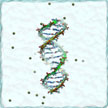 Cytosine (C) modifications such as 5-methylcytosine (mC) and 5-hydroxymethylcytosine (hmC) are important epigenetic markers associated with gene expression and tumorigenesis. However, bisulfite conversion, the gold standard methodology for mC mapping, can not distinguish mC and hmC bases. Recent studies have demonstrated hmC detection via peptide recognizing, enzymes, fluorescence and hmC-specific antibodies - nevertheless, a method for directly discriminating C, mC and hmC bases without labeling, modification and amplification is still missing. New results demonstrate that single base of C, mC and hmC can be discriminated at the latch zone of a nanopore.
Cytosine (C) modifications such as 5-methylcytosine (mC) and 5-hydroxymethylcytosine (hmC) are important epigenetic markers associated with gene expression and tumorigenesis. However, bisulfite conversion, the gold standard methodology for mC mapping, can not distinguish mC and hmC bases. Recent studies have demonstrated hmC detection via peptide recognizing, enzymes, fluorescence and hmC-specific antibodies - nevertheless, a method for directly discriminating C, mC and hmC bases without labeling, modification and amplification is still missing. New results demonstrate that single base of C, mC and hmC can be discriminated at the latch zone of a nanopore.
Aug 15th, 2014
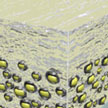 A large part of low-energy photons, such as in the deep-red and infrared, are lost during conventional photovoltaic or photochemical processes. However, about half of all the solar energy reaching the Earth's surface can be found in these wavelengths.
Harvesting this light more efficiently is possible thanks to a process called photon energy upconversion. Researchers now have successfully synthesized a bioinspired upconverting solid-state-like film using nanocellulose.
A large part of low-energy photons, such as in the deep-red and infrared, are lost during conventional photovoltaic or photochemical processes. However, about half of all the solar energy reaching the Earth's surface can be found in these wavelengths.
Harvesting this light more efficiently is possible thanks to a process called photon energy upconversion. Researchers now have successfully synthesized a bioinspired upconverting solid-state-like film using nanocellulose.
Aug 14th, 2014
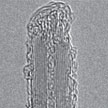 So far, it has been generally accepted knowledge that boron nitride nanotubes (BNNTs) are highly inert to oxidative treatments and can only be covalently modified by highly reactive species. By contrast, oxidation of carbon nanotubes has been proven very convenient and fundamentally important to modify the nanotube structure and morphology via controlled corrosive effects. Now, researchers have discovered a convenient method to disperse and chemically modify the morphology of BNNTs by sonication in aqueous ammonia solutions.
So far, it has been generally accepted knowledge that boron nitride nanotubes (BNNTs) are highly inert to oxidative treatments and can only be covalently modified by highly reactive species. By contrast, oxidation of carbon nanotubes has been proven very convenient and fundamentally important to modify the nanotube structure and morphology via controlled corrosive effects. Now, researchers have discovered a convenient method to disperse and chemically modify the morphology of BNNTs by sonication in aqueous ammonia solutions.
Aug 13th, 2014
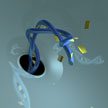 DNA is constantly being damaged in our cells by radiation and other random sources. One of the major forms of this damage is called depurination, or the selective loss of A and G bases from the double helix structure. In our cells, there is a system in place to fix depurination. It usually is quite successful at repairing the damage, but can sometimes make mistakes that result in mutations. As a result, depurination is directly linked to a host of diseases, including anemia and cancer. In new work, researchers show that DNA depurination can be detected electrically using solid-state nanopores.
DNA is constantly being damaged in our cells by radiation and other random sources. One of the major forms of this damage is called depurination, or the selective loss of A and G bases from the double helix structure. In our cells, there is a system in place to fix depurination. It usually is quite successful at repairing the damage, but can sometimes make mistakes that result in mutations. As a result, depurination is directly linked to a host of diseases, including anemia and cancer. In new work, researchers show that DNA depurination can be detected electrically using solid-state nanopores.
Aug 7th, 2014
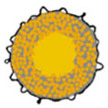 A three-dimensional crumpled graphene-encapsulated nickel sulfide electrode is reported as a superior high-energy lithium storage material. Compared with an electrode without crumpled graphene encapsulation, the optimized electrode yields significant improvements, especially in the cycling stability and rate capability. This enhanced performance is attributed to the 3D framework providing high continuous electron pathway and more free space for charge and mass transfer, and the stabilizing effect of the crumpled graphene based stretchy shell.
A three-dimensional crumpled graphene-encapsulated nickel sulfide electrode is reported as a superior high-energy lithium storage material. Compared with an electrode without crumpled graphene encapsulation, the optimized electrode yields significant improvements, especially in the cycling stability and rate capability. This enhanced performance is attributed to the 3D framework providing high continuous electron pathway and more free space for charge and mass transfer, and the stabilizing effect of the crumpled graphene based stretchy shell.
Aug 6th, 2014
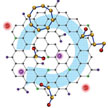 Sulfur is a very intriguing solution for the design of high energy density storage devices. The lithium-sulfur battery theoretically delivers an energy density which is 3-5 times higher than traditional lithium-ion batteries. Unfortunately, several obstacles so far have prevented the practical demonstration of sulfur-based cathodes for Li-S batteries. Among them, the most important one is the rapid capacity fading. Researchers have now developed a novel strategy towards highly stable Li-S batteries by building a strongly coupled interface between surface- mediated carbon hosts and various sulfur-containing guests.
Sulfur is a very intriguing solution for the design of high energy density storage devices. The lithium-sulfur battery theoretically delivers an energy density which is 3-5 times higher than traditional lithium-ion batteries. Unfortunately, several obstacles so far have prevented the practical demonstration of sulfur-based cathodes for Li-S batteries. Among them, the most important one is the rapid capacity fading. Researchers have now developed a novel strategy towards highly stable Li-S batteries by building a strongly coupled interface between surface- mediated carbon hosts and various sulfur-containing guests.
Aug 5th, 2014
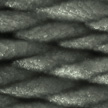 Researchers have now shown that, by varying the shape of magnetite nanoparticles, they can control the nature of the self-assembled structures as the nanoparticles assemble. This new work provides guidelines for the design of new self-assembled materials. Self-assembly of nanoparticles driven by competing forces can result in truly unique structures, the diversity and complexity of which could be particularly striking if the building blocks were simultaneously coupled by short- and long-range forces of different symmetries.
Researchers have now shown that, by varying the shape of magnetite nanoparticles, they can control the nature of the self-assembled structures as the nanoparticles assemble. This new work provides guidelines for the design of new self-assembled materials. Self-assembly of nanoparticles driven by competing forces can result in truly unique structures, the diversity and complexity of which could be particularly striking if the building blocks were simultaneously coupled by short- and long-range forces of different symmetries.
Aug 4th, 2014
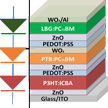 Researchers present an efficient design for a triple-junction organic tandem solar cell featuring a configuration of bandgap energies designed to maximize the tandem photocurrent output. The key innovation in this study is the demonstration of organic materials being able to mimic the record-setting efficiency of triple-junction structures in III-V solar cells. The team set out to determine a practical combination of bandgap energies for triple junctions to develop an efficient organic tandem solar cell structure.
Researchers present an efficient design for a triple-junction organic tandem solar cell featuring a configuration of bandgap energies designed to maximize the tandem photocurrent output. The key innovation in this study is the demonstration of organic materials being able to mimic the record-setting efficiency of triple-junction structures in III-V solar cells. The team set out to determine a practical combination of bandgap energies for triple junctions to develop an efficient organic tandem solar cell structure.
Jul 31st, 2014
 Cytosine (C) modifications such as 5-methylcytosine (mC) and 5-hydroxymethylcytosine (hmC) are important epigenetic markers associated with gene expression and tumorigenesis. However, bisulfite conversion, the gold standard methodology for mC mapping, can not distinguish mC and hmC bases. Recent studies have demonstrated hmC detection via peptide recognizing, enzymes, fluorescence and hmC-specific antibodies - nevertheless, a method for directly discriminating C, mC and hmC bases without labeling, modification and amplification is still missing. New results demonstrate that single base of C, mC and hmC can be discriminated at the latch zone of a nanopore.
Cytosine (C) modifications such as 5-methylcytosine (mC) and 5-hydroxymethylcytosine (hmC) are important epigenetic markers associated with gene expression and tumorigenesis. However, bisulfite conversion, the gold standard methodology for mC mapping, can not distinguish mC and hmC bases. Recent studies have demonstrated hmC detection via peptide recognizing, enzymes, fluorescence and hmC-specific antibodies - nevertheless, a method for directly discriminating C, mC and hmC bases without labeling, modification and amplification is still missing. New results demonstrate that single base of C, mC and hmC can be discriminated at the latch zone of a nanopore.

 Subscribe to our Nanotechnology Spotlight feed
Subscribe to our Nanotechnology Spotlight feed





